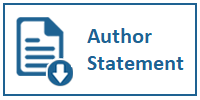Keterbukaan Komunikasi pada Pelayanan Prima
DOI:
https://doi.org/10.31937/ultimacomm.v4i2.210Abstract
Bureaucracy Service Excellence (PPB) is one of the crucial factors to push forward the progress of a certain state. State progress is reflected in the standard of bureaucracy service towards its people. Correlatively, the more developed the state, the more quality its bureaucracy service. As a matter of fact, poor countries often show their bureaucracy service as below the minimum standard. Meanwhile, developing countries demonstrate their bureaucracy service in line with minimum standard. The bureaucracy service above minimum standard is shown by highly developed countries. Knowing this fact, improving public service is a must for most government, especially during reformation era and public information transparency regime occurred recently in Indonesia. To achieve this feat, reforming bureaucracy administration is a goal to score for the sake of citizens' wellbeing and a greater happiness for society. This means that bureaucrats should be ready to serve people by all means, and not vice versa. The true leader is one who proudly walks on the path of service. Essentially, bureaucracy service excellence (PPB) aims at empowering citizens to fully involve in various activities of state building. PPB, in turn, will nurture society's trust toward its government. Consequently, this social trust will motivate people to actively participate in every development planning of the government to finally boost economic growth. In order to manifest those beliefs, it takes open communication as the main tools for increasing service excellence.
Key words: Service excellence, Bureaucracy, Social Trust, Progress, Participation.
Downloads
Downloads
Published
How to Cite
Issue
Section
License
Ultimacomm Jurnal Ilmu Komunikasi allows readers to read, download, copy, distribute, print, search, or link to its articles' full texts and allows readers to use them for any other lawful purpose. The journal allows the author(s) to hold the copyright without restrictions. Finally, the journal allows the author(s) to retain publishing rights without restrictions
1. Authors are allowed to archive their submitted article in an open access repository
2. Authors are allowed to archive the final published article in an open access repository with an acknowledgment of its initial publication in this journal














